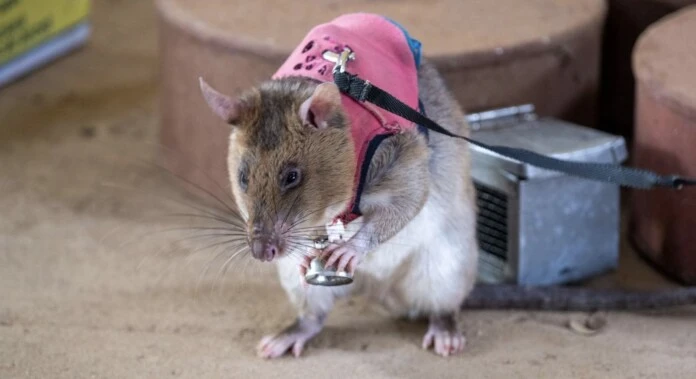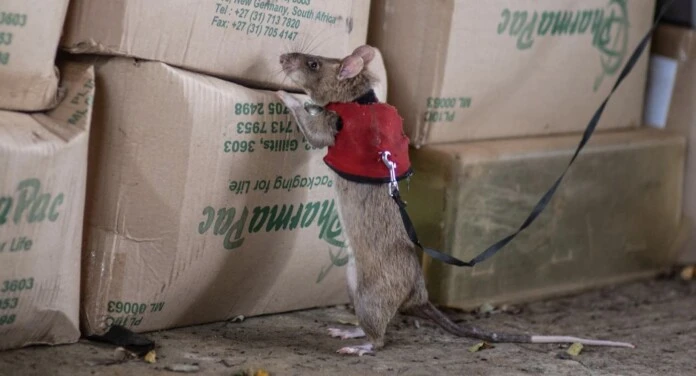Small rats equipped with miniature backpacks are now being utilized to detect wildlife products trafficked illegally.
African giant pouched rats have been trained to identify the scent of illicit animal parts, including elephant tusks and rhino horns.
Historically, these rodents have served in detecting explosives and tuberculosis; however, a recent scientific study indicates they can also effectively uncover smuggled wildlife items.

In the study, sixteen rats were trained to recognize wildlife products hidden within shipping containers. During the initial proof-of-concept phase, they successfully identified commonly trafficked wildlife items in a controlled laboratory environment.
The research demonstrated that these rats could be trained to detect pangolin scales and endangered African hardwood, even when mixed with other “odoriferous items” used by traffickers to disguise their illicit cargo. When they successfully identified a target item, the rats received a reward consisting of a food mixture enriched with avocado, banana, and crushed chow pellets.
The study was conducted by the Dutch organization APOPO, established in 1995 to develop innovative solutions for protecting both people and the environment through the use of trained rats. Founder Bart Weetjens initially sought to address landmine issues and, as a rat enthusiast, came across research using gerbils as scent detectors. Consulting with Professor Ron Verhagen, a rodent specialist at the University of Antwerp, they determined that the African Giant Pouched rat was the most suitable option, particularly due to its typical eight-year lifespan.
“Rats have low training and upkeep costs, can easily work with multiple handlers, enjoy a long lifespan, and possess an advanced sense of smell,” the researchers noted at their training facility in Morogoro, Tanzania.
“Their small size grants them distinct advantages for screening shipping containers, such as their ability to navigate tightly packed spaces or be elevated to inspect the contents of sealed containers via ventilation systems.” The research report concluded that these trained rats could soon be evaluated for “operational feasibility for deployment at ports.”
The findings, published in Frontiers in Conservation Science, revealed that the rats could rapidly learn to don a vest and activate an electronic microswitch to signal remotely when they located a wildlife target in a simulated port setting.
